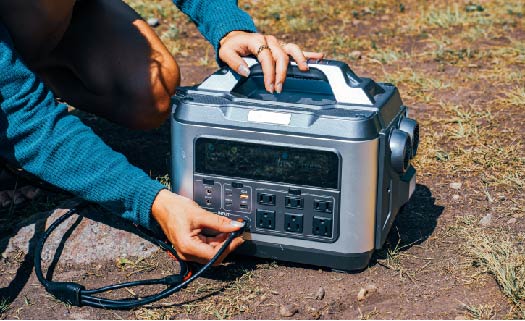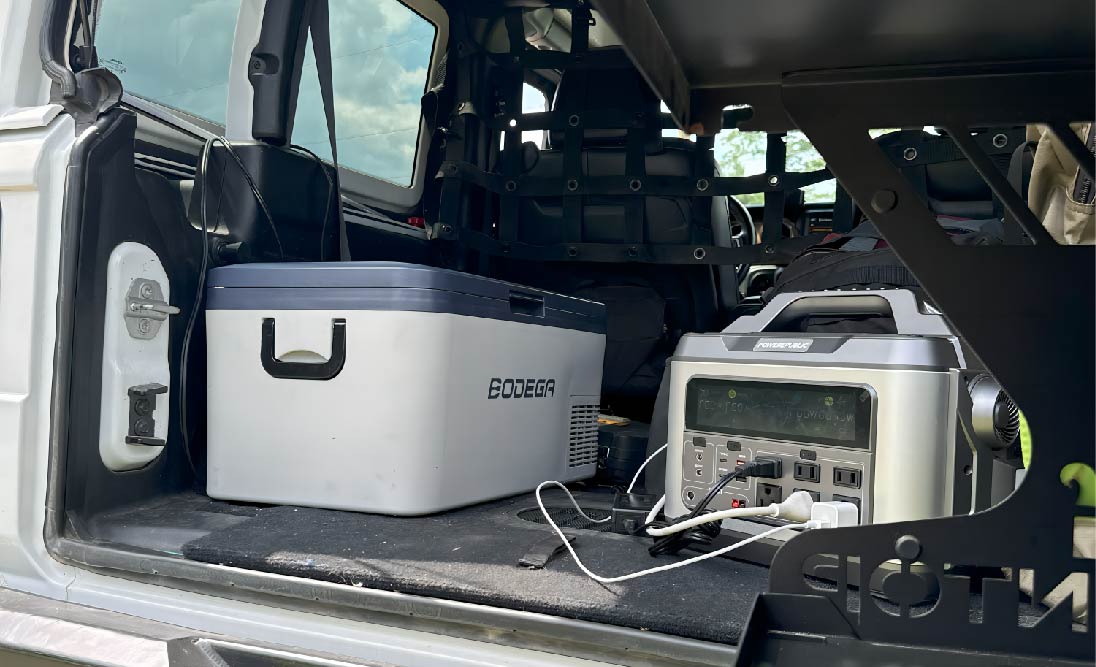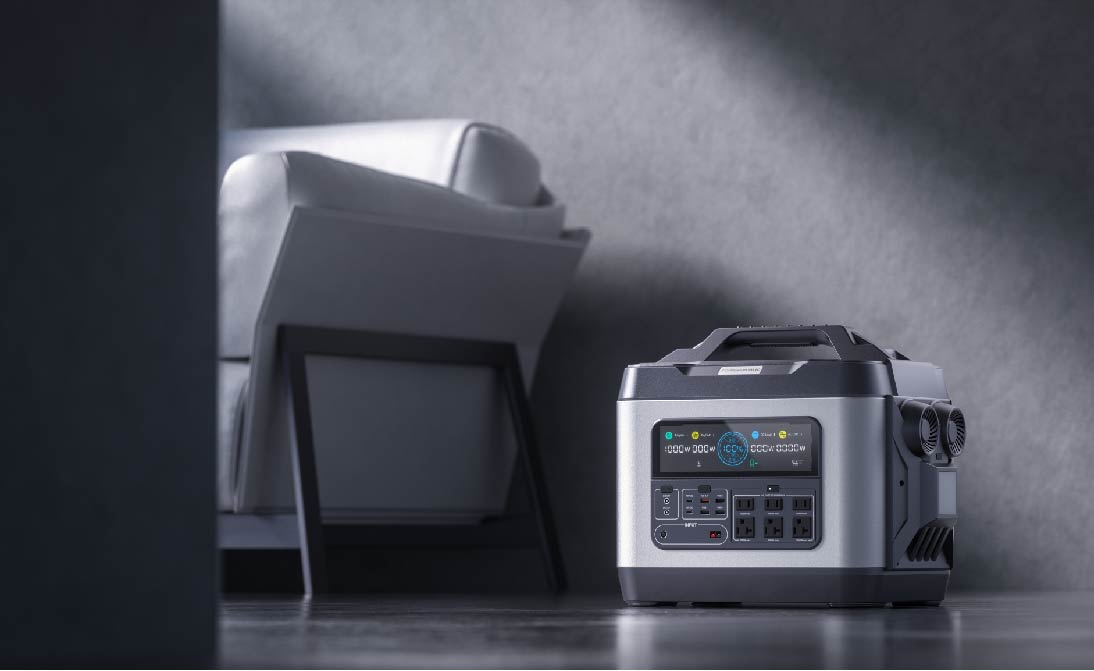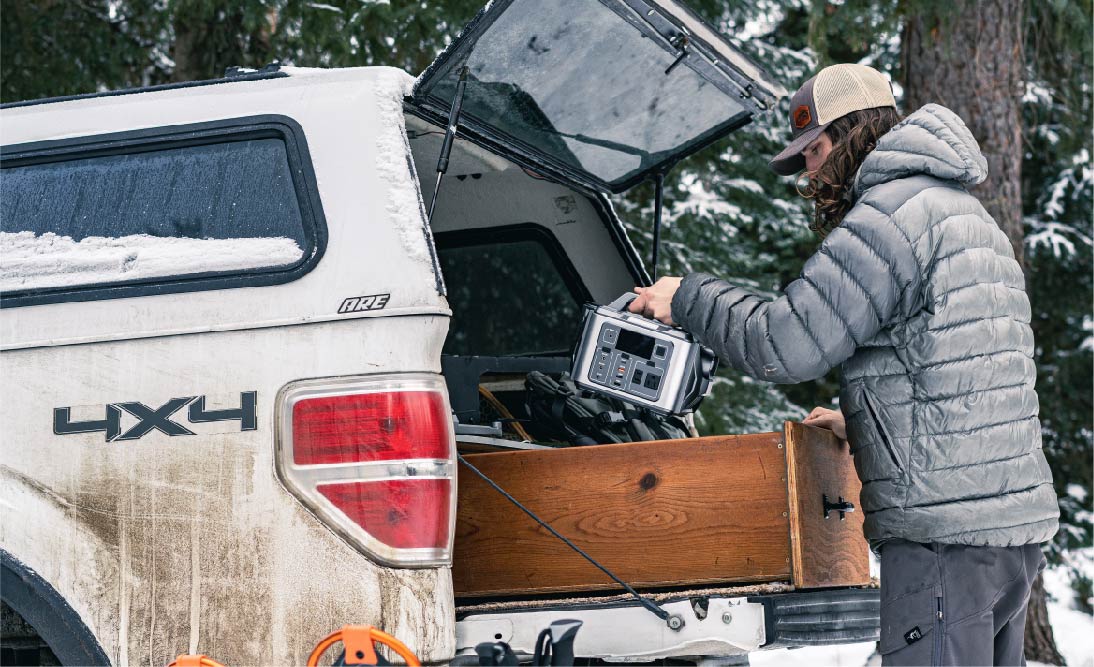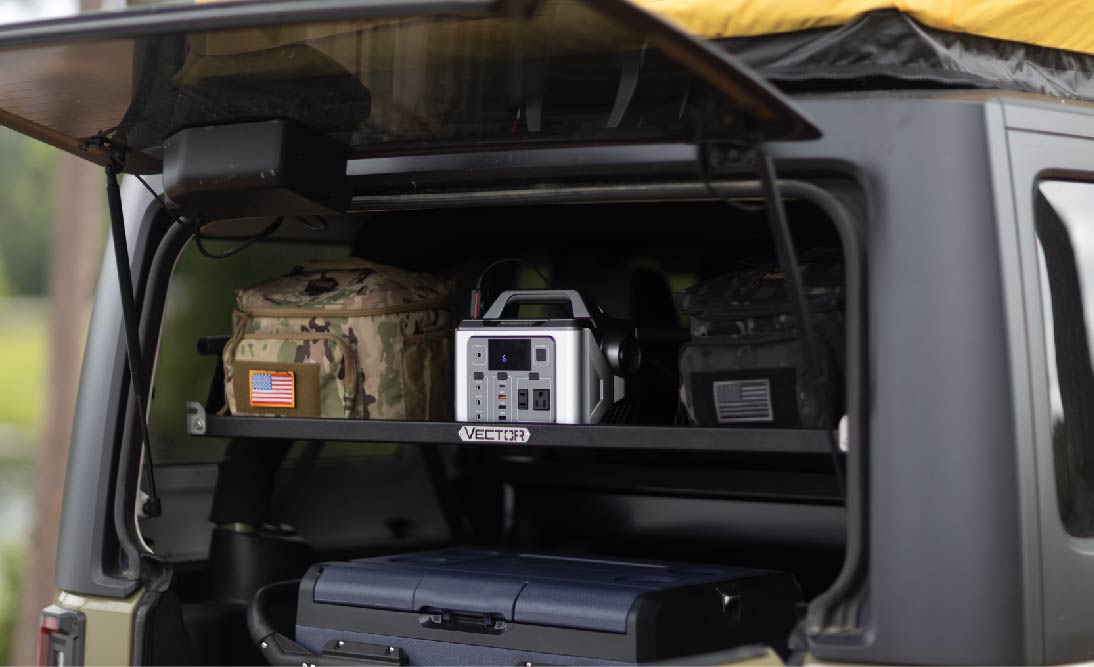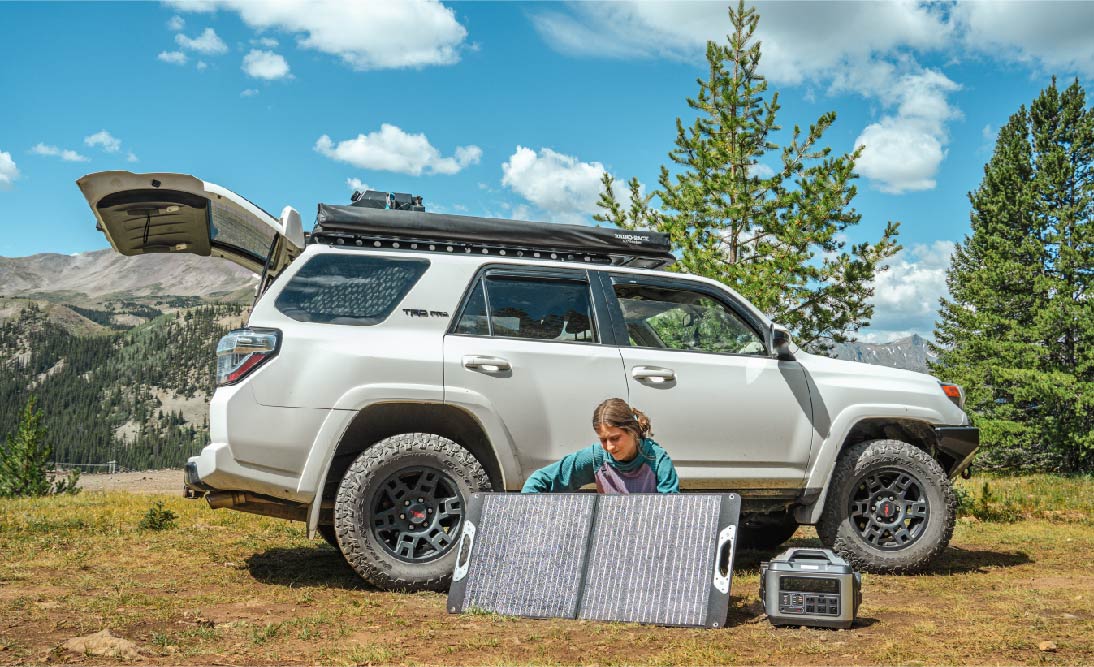Table of contents:
-
How To Select the Best Solar Rechargeable Battery for Your Gadgets?
-
Can Solar Generator Kits Function Like Solar Rechargeable Battery?
-
Solar Rechargeable Battery: POWEREPUBLIC Solar Generator Kits
-
FAQ II: How Many Solar Batteries are Needed To Power a House?
Imagine a world where your gadgets never run out of juice, and your home draws its energy from the sky. That's not a dream; it's the reality solar rechargeable batteries are creating. These eco-friendly powerhouses are changing the game, providing reliable energy without a carbon footprint. Whether you're a tech lover, an eco-warrior, or just someone looking to cut down on energy bills, solar batteries offer a solution.
In this guide, we delve into everything you need to know about solar rechargeable batteries—from their strengths and limitations to choosing the right one for your gadgets. Curious about solar generator kits? We've got that covered too, including a look at POWEREPUBLIC's top-tier options. We'll tackle the burning questions: How long do these batteries last? How many do you need to power a house? And how do you pair them with solar panels?
Join us as we explore how solar rechargeable batteries are lighting up lives while keeping the planet cool. Get ready to power up your world, the solar way!
Solar Rechargeable Battery Overview
Definition
A solar rechargeable battery is an innovative energy storage solution that harnesses sunlight to generate electricity, storing it for future use. These batteries are a cornerstone of sustainable living, offering an eco-friendly alternative to traditional energy sources by reducing reliance on fossil fuels and minimizing carbon emissions.
Components and Functions
-
Solar Panels: Convert sunlight into electrical energy. They are the first critical component, capturing solar energy and converting it into direct current (DC) electricity.
-
Charge Controller: Regulates the voltage and current coming from the solar panels to the battery, preventing overcharging and damage.
-
Battery Storage: Stores the electrical energy converted by solar panels. This is where the solar rechargeable battery comes into play, holding the energy until needed.
-
Inverter: Converts DC electricity stored in the battery into alternating current (AC) electricity, making it usable for standard household gadgets and appliances.

How Does It Work?
-
Energy Capture: Solar panels collect sunlight and convert it into DC electricity.
-
Energy Regulation: The charge controller ensures the battery charges efficiently and safely.
-
Energy Storage: The solar rechargeable battery stores the converted electricity until it's needed.
-
Energy Conversion: When devices need power, the stored DC electricity is converted into AC by the inverter, supplying energy to run or charge gadgets and appliances.
Price Range
The cost of solar rechargeable batteries varies widely, depending on capacity, brand, and technology. Basic setups for small gadgets might start as low as $100-$200, while comprehensive home systems can run upwards of $5,000-$10,000 or more. The investment pays off in the long run by reducing or even eliminating electricity bills.
Powering Your World with Solar Rechargeable Batteries
-
Gadgets: For smaller devices, like smartphones or tablets, a compact solar battery charger can keep your tech-powered on the go. Prices range from $20 to $100 for portable options.
-
Home Energy: To power a home, you’ll need a more robust setup. A typical household might require a system with a capacity of 10-20 kWh per day. Pairing several high-capacity solar rechargeable batteries can meet these needs, with system costs varying widely based on energy requirements and storage capacity.
Choosing the Right Solar Rechargeable Battery
Consider these key factors:
-
Capacity and Power Requirements: Assess the energy needs of your gadgets or home to determine the battery size.
-
Compatibility with Solar Panels: Ensure the battery is compatible with your solar panel setup for optimal efficiency.
-
Lifespan and Warranty: Look for batteries with a long lifespan (typically 5-15 years) and a solid warranty.
Solar Generator Kits
For an all-in-one solution, solar generator kits, like those offered by POWEREPUBLIC, bundle solar panels, batteries, charge controllers, and inverters. These kits are designed for ease of use, making solar power accessible for eco-warriors, tech enthusiasts, and anyone looking to cut energy costs.
Embracing Solar Power
Solar rechargeable batteries represent a leap toward sustainable energy use, offering a green solution that benefits both your wallet and the planet. By understanding their operation, components, and how to select the right setup, you can harness the sun’s power to illuminate your life and protect the environment.
Strengths and Limitations of Solar Rechargeable Battery
Solar rechargeable batteries are transforming how we power our lives, blending innovation with sustainability. Below, we explore their advantages and limitations to give you a clear picture of their potential impact.
Strengths of Solar Rechargeable Batteries
-
Eco-Friendly Energy Source: By harnessing the sun's power, these batteries reduce dependence on fossil fuels, cutting down carbon emissions and contributing to a healthier planet.
-
Cost-Effective in the Long Run: Although the initial setup cost might be high, solar rechargeable batteries offer significant savings over time. By generating your electricity, you can greatly reduce or even eliminate your electric bills.
-
Energy Independence: They provide energy independence from the grid. In areas with frequent power outages or remote locations, solar batteries ensure a constant power supply, enhancing reliability and security.
-
Incentives and Rebates: Many regions offer incentives, rebates, or tax breaks for installing solar energy systems, making the initial investment more manageable.
-
Scalability and Versatility: Whether powering a smartphone or an entire home, solar rechargeable batteries are scalable to different energy needs. They can be used in various settings, from urban homes to remote cabins.

Limitations of Solar Rechargeable Batteries
-
Upfront Cost: The initial cost for a complete solar power system, including batteries, can be substantial, ranging from a few thousand to tens of thousands of dollars, depending on the scale and specifications.
-
Weather Dependency: Solar rechargeable battery efficiency can be affected by weather conditions. On cloudy or rainy days, energy production is reduced, which may necessitate a larger battery bank or a backup power source.
-
Space Requirements: Solar panels require significant space. For individuals with limited space, installing enough panels to meet energy needs can be challenging.
-
Maintenance and Lifespan: While solar panels have a long lifespan (25+ years), batteries typically last between 5 to 15 years, depending on the type and how they're used. Regular maintenance is also needed to ensure optimal performance.
-
Complexity in Installation: Setting up a solar power system can be complex, requiring professional installation and potentially navigating zoning laws and electrical codes.
Example Calculation:
To illustrate, consider a home that consumes an average of 30 kWh of electricity per day. To cover this with solar power, assuming 5 hours of peak sunlight per day and 90% system efficiency, you'd need about 7kW of solar panels and a battery system that can store at least 30 kWh. The cost for such a setup could range significantly, but with incentives and over time, the system pays for itself through savings on electricity bills.
Some Thoughts
Solar rechargeable batteries offer a promising path towards sustainable energy use, marrying environmental benefits with technological advancements. While the initial investment and some practical limitations present challenges, the long-term advantages—both financial and ecological—make them a compelling choice for many. As technology advances and costs continue to decrease, solar rechargeable batteries will become even more accessible and effective, powering our world in harmony with the environment.
How To Select the Best Solar Rechargeable Battery for Your Gadgets?
Selecting the best solar rechargeable battery for your gadgets, whether you're camping, embracing van life or RV living, setting up an off-grid living situation, or simply seeking home backup power, involves understanding your energy needs and how these innovative devices fit into your lifestyle.
Below, we break down the key considerations and provide examples to help you choose the right solar rechargeable battery for your needs. Remember, the goal is to harness the sun's power effectively and efficiently, enhancing your energy independence and reducing your carbon footprint.

Understand Your Energy Needs
First and foremost, assess your energy consumption. For gadgets like smartphones and tablets, a small, portable solar charger might suffice. However, for larger demands, such as powering a home or RV, you’ll need a more substantial setup.
-
Camping & Portable Gadgets: Look for compact and lightweight solar battery chargers with a capacity of around 10,000 to 20,000 mAh. These can charge a smartphone several times over.
-
Vanlife/RVlife & Off-grid Living: Consider your daily energy usage in kWh and aim for a solar rechargeable battery setup that meets this demand. Systems in the range of 1-5 kWh are common for these lifestyles.
-
Home Backup: For home backup, calculate your home's daily kWh usage and aim for a system that can provide this amount of energy for several days, considering potential weather variations.
Capacity and Power Requirements
Select a solar rechargeable battery with enough capacity to meet your power needs. A higher-capacity battery ensures you can run all your gadgets without running out of power quickly.
-
Example Calculation for Camping: If your smartphone battery is 3,000 mAh and you wish to recharge it fully at least three times, you’ll need a solar rechargeable battery with a minimum capacity of 9,000 mAh.
Compatibility with Solar Panels
Ensure the solar rechargeable battery is compatible with your existing solar panel setup or the one you plan to purchase. This includes matching voltage and the type of connection.
Lifespan and Warranty
Opt for solar rechargeable batteries with a long lifespan (usually 5-15 years) and a solid warranty to ensure reliability and long-term savings.
Cost-Effectiveness
While initial costs can be high, consider the long-term savings on electricity bills. Look for solar rechargeable batteries that offer the best balance between upfront cost and operational efficiency.
Weather Dependency and Location
Remember, the efficiency of solar rechargeable batteries depends on sunlight availability. If you live in a less sunny area, you might need larger batteries or a backup power source.
Maintenance and Space Requirements
Consider the maintenance needs and physical size of the battery setup. Ensure you have adequate space and are capable of performing or paying for maintenance.
By carefully considering your specific needs and following these guidelines, you can select the best solar rechargeable battery to power your gadgets, ensuring energy independence and contributing to a greener planet. Remember, investing in solar power not only benefits you but also supports the global shift towards sustainable energy sources.
Can Solar Generator Kits Function Like Solar Rechargeable Battery?
Solar generator kits can function like solar rechargeable batteries, offering a portable and integrated solution for harnessing and storing solar energy. These kits combine solar panels, batteries, charge controllers, and inverters into a single package, making solar power accessible for a variety of uses, from outdoor adventures to emergency home backup.
Let's dive into the how, the pros, and the cons.
How Solar Generator Kits Work?
-
Integration of Components: Solar generator kits streamline the process of converting and storing solar energy by integrating solar panels (for capturing sunlight), a charge controller (to regulate energy flow), battery storage (to hold the energy), and an inverter (to convert DC to AC electricity).
-
Plug-and-Play Functionality: Most kits are designed for easy setup, often requiring just the connection of solar panels to the generator, making them user-friendly even for those new to solar power.

Pros of Solar Generator Kits
-
Portability: Many solar generator kits are designed for easy transport, making them ideal for camping, RVs, and outdoor events.
-
Simplicity: The all-in-one design eliminates the need for separate component purchases, making installation and use straightforward.
-
Versatility: These kits can power everything from small gadgets to essential home appliances, depending on their size and capacity.
-
Eco-Friendly: Like individual solar rechargeable batteries, solar generator kits offer a green energy solution, reducing reliance on fossil fuels and lowering carbon emissions.
-
Incentives: Purchasers of solar generator kits may also qualify for tax breaks or rebates in many regions, enhancing their cost-effectiveness.
Cons of Solar Generator Kits
-
Initial Cost: The upfront price can be high, although this is offset by long-term savings on energy bills.
-
Weather Dependency: Solar generator kits' efficiency can drop on cloudy or rainy days, possibly necessitating additional battery capacity or a backup power source.
-
Space Requirements: While portable, these kits still require space for setup, particularly the solar panels, which might be a consideration for those with limited space.
Examples and Calculations
-
For Camping: A portable solar generator kit can keep small appliances and gadgets charged during your outdoor adventures.
-
For Home Backup: A larger setup can offer extensive power solutions for home emergencies, capable of powering appliances and charging multiple devices.
Some Thoughts
Solar generator kits serve as a practical embodiment of solar rechargeable batteries, encapsulating the benefits of solar power in a convenient, portable package. They offer a versatile solution for a wide range of applications, from personal gadgets to home energy needs. Despite the higher initial investment and some practical limitations, the long-term benefits of using solar generator kits—both financial and environmental—present a compelling argument for their adoption. As solar technology continues to advance and become more cost-effective, these kits will likely play an increasingly important role in our journey toward sustainable energy solutions.
Solar Rechargeable Battery: POWEREPUBLIC Solar Generator Kits
From the information above, we know that solar generator kits play an important role in sustainable living. They are portable, versatile, and rechargeable, ensuring your gadgets stay charged no matter where you roam, giving you peace of mind.

So, if you are looking for solar rechargeable batteries, consider POWEREPUBLIC's solar generator kits. To better understand, evaluate, and compare the functionality of POWEREPUBLIC's solar generator kits, check out the table below:
|
Solar Generator |
T3000 + PV200 |
||
|
Suggested Applications |
Camping, Vanlife, RVlife & Overlanding |
Off-Grid Living & Home Back Up |
Off-Grid Living & Home Back Up |
|
Capacity |
1110Wh/50,000mAh |
2240Wh/100,000mAh |
3200Wh/125,000mAh |
|
Continuous Power |
1200W |
2200W |
3000W |
|
Starting Power |
2600W |
4500W |
6000W |
|
Battery Type |
Lithium-Ion(800+ cycles) |
LiFePO4 Batteries(3000+ cycles) |
LiFePO4 Batteries(3000+ cycles) |
|
Number of Output Ports |
13 Output Ports |
15 Output Ports |
15 Output Ports |
|
Charging Methods |
AC Adapter, Solar Panel, Car Charger |
AC Adapter, Solar Panel, Car Charger |
AC Adapter, Solar Panel, Car Charger |
|
Solar Input |
230W Max. |
230W Max. |
230W Max. |
|
Weight |
31Ibs/14Kg |
64Ibs/30Kg |
88Ibs/40Kg |
|
Dimensions |
14.3*9.3*10.6 Inch |
18.3*11.8*12.2 inch |
18.3*11.8*14.5 inch |
|
Est.Operation Time(h) |
The operation time(h)=Capacity(Wh) * 0.85 / The power of the item(W) |
||
|
9.5 hours |
19 hours |
27 hours |
|
|
Microwave Oven (800W) |
1.2 hours |
2.4 hours |
3.4 hours |
|
Coffee Maker (1000W) |
1 hour |
2 hours |
2.7 hours |
|
0.7 hours |
1.5 hours |
2.2 hours |
|
|
Washing Machine (1500W) |
/ |
1.2 hours |
1.8 hours |
|
Air Conditioner (2000W) |
/ |
1 hour |
1.3 hours |
|
Electric Grill (2200W) |
/ |
0.8 hours |
1.2 hours |
|
/ |
/ |
1 hour |
|
For a simpler comparison, please visit our Compare page for additional information.
It's important to know your power needs and how long you intend to power your gadgets before making a selection, to avoid overspending. A great solar rechargeable battery, like a POWEREPUBLIC solar generator kit, can ensure a safe and smooth journey by consistently providing power to your devices and essentials.
FAQ I: How Long Does a Solar Battery Last?
The lifespan of a solar battery depends on its type and how it's used.
Typically, lithium-ion batteries last about 5-15 years, while lithium iron phosphate (LiFePO4) batteries can last up to 10-20 years. Regular usage and charging cycles affect longevity. For example, POWEREPUBLIC's LiFePO4 batteries are rated for 3,000+ cycles, indicating they could last well over a decade with daily use.
FAQ II: How Many Solar Batteries are Needed To Power a House?
The number of solar batteries needed to power a house depends on your daily energy consumption and the capacity of the batteries. For an average American home consuming 30 kWh per day, and using POWEREPUBLIC T3000 with a capacity of 3200Wh, you would need multiple batteries for full daily coverage:
-
Daily Consumption: 30 kWh (30,000Wh)
-
Battery Capacity: 3,200Wh per T3000 unit
-
Calculation: 30,000Wh / 3,200Wh = Approximately 9.4
Rounding up, you'd need at least 10 POWEREPUBLIC T3000 units to cover a day's energy usage without recharging, factoring in efficiency losses.
FAQ III: How to Pair Solar Panels to Solar Batteries?
Pairing solar panels with solar batteries involves matching the charging capacity of the panels with the storage capacity of the batteries, considering daily energy needs and sunlight hours.

Here’s a simple way to calculate:
-
Assumption: You have a POWEREPUBLIC T1200 with a capacity of 1,110Wh and you consume 5 kWh (5,000Wh) daily. With an average of 5 peak sunlight hours a day:
-
Solar Panel Output Needed: 5,000Wh / 5 hours = 1,000W or 1kW
-
Solar Panel to Battery Ratio: If the T1200’s maximum solar input is 230W, you’d need about 4.35 panels of 230W each to fully charge the battery within one day. Rounding up, 5 panels of 230W would ensure your battery is adequately charged.
This example assumes ideal conditions; actual needs may vary based on location, weather, and specific energy usage patterns. Always consider efficiency losses and opt for a setup that meets your needs under various conditions.
Final Thoughts
Embracing solar rechargeable batteries and solar generator kits represents a significant step towards sustainable and independent living. These technologies offer an eco-friendly alternative to traditional power sources, harnessing the sun's energy to provide reliable and cost-effective power for everything from small gadgets to entire households. Whether you're exploring the great outdoors, living the van life, or simply seeking a backup power solution for your home, the versatility and efficiency of solar power can meet your needs.
POWEREPUBLIC's solar generator kits stand out as a prime example of this technology in action. They combine portability, power, and eco-friendliness, making them an excellent choice for anyone looking to reduce their carbon footprint and embrace a greener lifestyle. By understanding your energy needs, the capacity and compatibility of these solar solutions, and the practical considerations of installation and maintenance, you can make an informed decision that aligns with your energy goals and lifestyle. With advances in technology and increasing affordability, solar rechargeable batteries and solar generator kits are set to play an even bigger role in our energy futures.
By choosing POWEREPUBLIC's innovative solutions, you're not just powering your devices; you're powering a brighter, more sustainable future for all.













